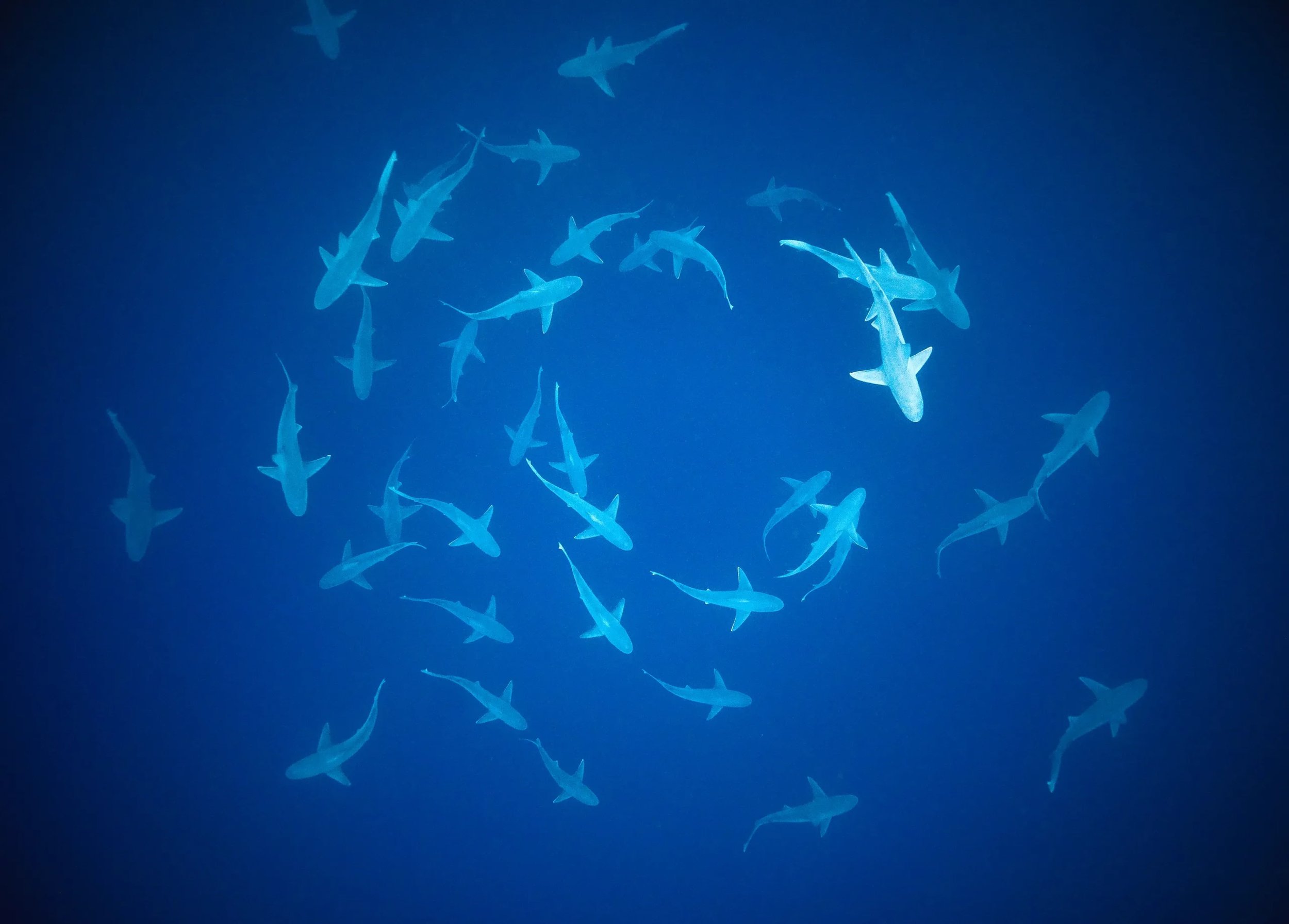Off the Mornington Peninsula in Victoria, Australia, 43-year-old diver Marshall Yu was approached by a 13-foot great white. He recalls being frozen in place as the behemoth shark, curious, came right for him.
Through the brief news circulation following the event, much adding expected sensationalism, Yu’s quote stands out. “I didn’t see any aggression,” he said. “I made eye contact with it. (The shark) was pretty cute.”
It may seem unbelievable that, during an unexpected encounter with such a large predator, one would even recognize the eyes, let alone comment on their beauty. But Yu is not alone in this thought.
Charles Darwin kept a journal from 1831-1836 chronicling his voyage along the southern hemisphere. In an August 28 entry he speaks on a shark’s eye with undeniable revery: “Caught by a hook a specimen of genus Squalus: Body “blueish grey”; above, with rather blacker tinge; beneath much white:--Its eye was the most beautiful thing I ever saw.—pupil pale “Verdegris green,” but with a lustre of a jewel, appearing like a Sapphire or Beryl.—Iris pearly edge dark.—Scelerotica pearly.”
Not every shark species has a pale green pupil around a Sapphire jewel with a pearly sclera. All are different, and in What You Should Know About Sharks, Ocean Ramsey argues this visual difference may affect their overall vision and, by extension, behavior.
“They all have unique eyes, beautiful and complex, and highly adapted to their specific ecological niche,” Ramsey writes. “Take tiger sharks, for example. Tiger sharks have an amber-yellow eye, like the color you see in the water in low morning and evening light. I can’t prove it exactly, but I think this coloring may provide an advantage. I have observed that tiger sharks like to approach with the sunlight perhaps because most animals avoid looking into the bright sunlight. It’s possible the color of their eyes helps with this approach in this type of low light. However, I’ve also observed that tiger sharks do not have the best eyesight. They don’t seem to notice small objects like many other species do, which might explain why, in addition to their foraging behavior and size, they are one of the species more suspect in adverse interactions in tropical waters.”
So, a shark’s eyes can stand out to a human. But can a human’s eyes stand out to a shark? Is Yu correct in saying he made mutual eye contact with the great white? According to shark experts, also yes.
While sharks lack the cells to process color vision, they do not lack visual acuity. Human eyes use muscles which control the lens shape and can focus light signals. Though shark lenses do not change shape, they can move forward and backward to focus light. In this sense, many sharks have been documented with a near-equal quality of vision as humans and rely on this strong sense for much of their activities and behavior.
A 2021 study published by the Journal of Ecotourism considered eye contact between humans and approaching Caribbean reef sharks, examining specifically whether an interruption, such as glancing at a camera or regarding where to retreat, would affect a shark’s behavior. In the field, divers maintained or interrupted eye contact with them, finding that the sharks came significantly closer to the divers when eye contact was interrupted and also reduced their speed.
“I don’t usually wear a mirrored scuba mask because I get a better response when the sharks can see my eyes,” Ramsey writes. “I also no longer wear mirrored lenses because they reflect light at random which can be eye catching in a bad way depending on my position. I’ve had a shark in the Bahamas rush at the reflection from my mask which I was able to block off at the last moment.”
Many types of sharks ambush their prey, and they can’t sneak-attack something that is aware of them. Thus, they have become evolutionarily wired to make and sense eye contact.
“The majority of the time, sharks rely on eyesight when hunting and are very sensitive to the eye line of prey and other predators,” Ramsey writes. “It’s for their own safety and success to be able to identify if a potential prey item is aware of their presence, and to identify where the front or eyes of a prey item or another predator are located and looking.”
Looking a shark in the eye is one of Ramsey’s favorite things to do. Much can be gained by studying how a shark scans its domain and what catches its attention. It allows divers to realize how much detail each species can and cannot see. It helps them understand what can attract unnecessary attention or cause confusion—a safety protocol when interacting with sharks.
Sharks, in identifying prey, in establishing dominance, are constantly surveilling the blue surroundings for an eyeline. But is this all it is, a simple prey-or-not binary, a checkbox of dominant or submissive? According to the people who are in the water with them every day, there might be something more going on here.
“Any time I have the experience where I get to lock eyes with a shark it’s almost as if time stops,” says Marina Praet, a safety diver at One Ocean Diving. “It’s as if you are able to communicate without words and peacefully coexist in their home. It truly shifts your perspective on sharks as a whole because you get to see them as more than an animal. You get a glimpse into their personality and have a chance to understand them on a deeper level.”





